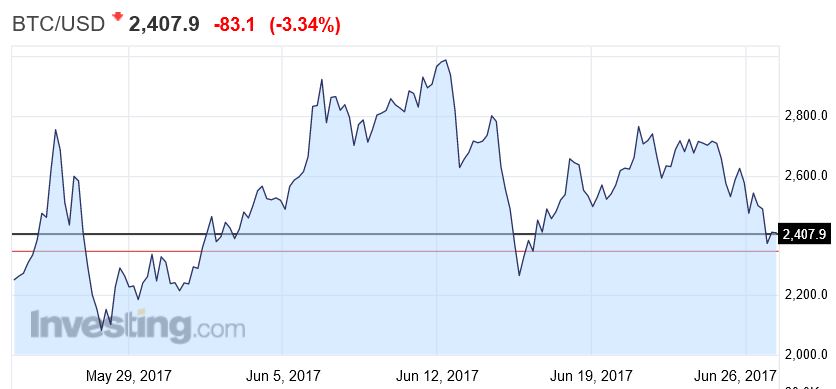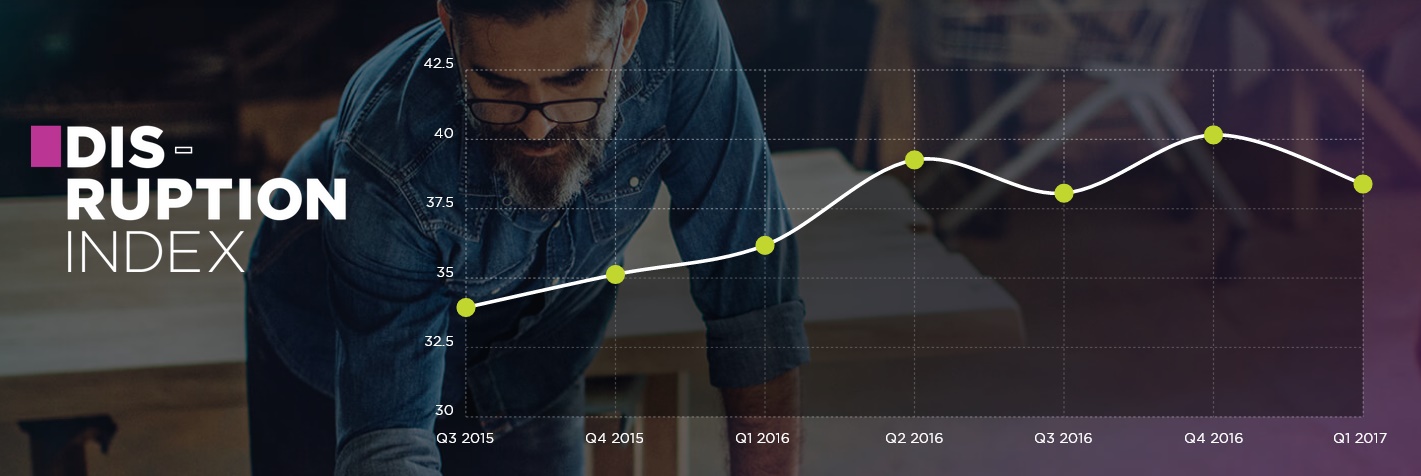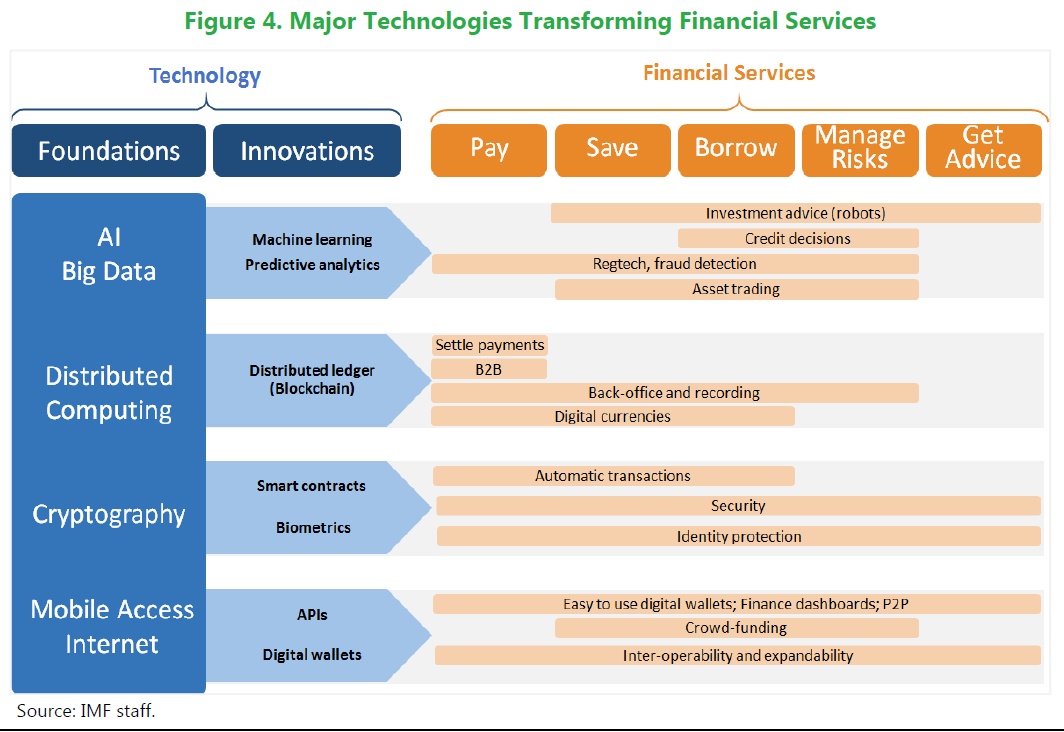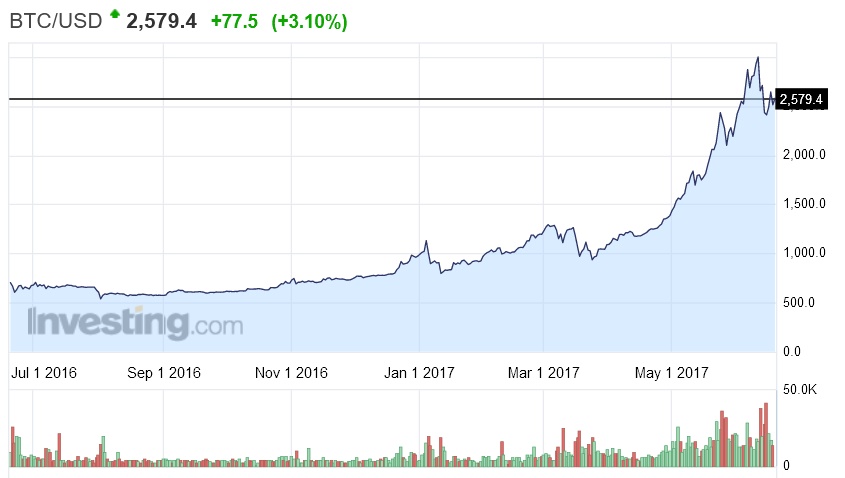Having reach a high against the US$ of more than $2,800, Bitcoin has now fallen substantially.
 The virtual currency reacted to the news that India may be inclined to recognise Bitcoin as a currency, but then fell significantly. There are reasons why bitcoin could thrive in a country like India.
The virtual currency reacted to the news that India may be inclined to recognise Bitcoin as a currency, but then fell significantly. There are reasons why bitcoin could thrive in a country like India.
This article from Business Insider explains:
At 1.32 billion, India’s population may have already taken over China’s – making it the most populous country in the world. According to a study by PricewaterhouseCoopers’, at least a whopping 233 million Indians still don’t have bank accounts.
Although due to demonetization (a government’s move that got rid of 86% currency notes in circulation) and under Prime Minister’s Jan-dhan Yojna (an initiative to open bank accounts for every Indian household), a lot of people have managed to get their bank accounts, but that number is far from 200 million mark.
Ironically, India has one of the largest remittance markets in the world with a total value of close to $70 billion. On every transaction, an average user pays up to 15% in bank charges and conversion fees.
Bitcoin provides a solution to India’s underlying problems. The digital currency can be used to move money inexpensively across borders within a matter of minutes without ever having a bank account. It’s important to note that lately bitcoin adoption is taking over its network capacity, leading to delay in transactions and very high fees (more on this later).
How does it work?
Every transaction on the bitcoin network is recorded on a public ledger called blockchain . Each blockchain has three parts; its identifying address (of approximately 34 characters), the history of who has bought and sold it (the ledger) and the private key header log – where a sophisticated digital signature is captured to confirm every transaction for that particular Bitcoin file.
All the trades that happen on the bitcoin network are publicly disclosed, with each participant’s digital signature attached to the Bitcoin blockchain as a confirmation. These trades can be found at blockchain.info .
What this means is that bitcoin transactions are not completely anonymous. People can see history of your bitcoin wallet, which is great for transparency and security. It also helps deter people from using bitcoins for illegal purposes.
With each new ledger update, some new bitcoins are minted. The number of bitcoins created in each update are halved every 4 years. This will go on till 2140 when this number will round down to zero. At that time no more bitcoins will be added into circulation and the total number of bitcoins will have reached a maximum of 21 million.
The block size controversy
The debate on whether or not to increase the block size has been going on for a few years now. It is clear that the bitcoin network is a bit clogged up at this point and something definitely needs to be done to scale the network in order reduce the transaction fees and time.
At present bitcoin network can achieve 7 transactions per second. To put this in context, Visa says its payment system processes 2,000 transactions per second on average and can handle up to 56,000 transactions per second if needed.
Every transaction on the blockchain is verified by miners who use computing power to solve increasingly complex mathematical equations, which comes in “blocks” and are mined about every 10 minutes. Since these blocks are capped at 1MB, they can record just seven transactions per second, at most.
The average time it takes for a bitcoin transaction to be verified is around 50 minutes, but some transactions can even take days. If you add a small fee to your transaction, it bumps that transaction up in the queue, meaning that those who didn’t pay such a fee may have to wait more.
This has led bitcoin supporters to split into two groups; Bitcoin core (aka the developers) and Bitcoin Unlimited (aka the miners). They both have different scaling proposals, BIP 148 and Segwit2x respectively.
On August 1, 2017 the fate of bitcoin will be decided. Bitcoin core is going to go ahead with its user-activated soft fork (UASF) that would seek to push SegWit (Segregated Witness) live without explicitly asking miners for their support in order to make the blocks more efficient without increasing their size.
Meanwhile, SegWit2x, plans to pair SegWit with a 2 MB block-size increase, boosting transaction capacity further by tweaking the bitcoin’s underlying rules.
If everything goes according to plan, users will be able to start running SegWit2x on 21st July. Similarly, BIP 148 will be triggered on 1st August. There are fears that this collision could possibly split bitcoin into two with entirely different networks.
In a nutshell, this is how it will go: if the users’ fork has below 50% of hashing power, then there will be two branches; a user’s fork and a miner’s fork. If at some point users’ fork gains more hashing power and has longer chain than the miners’ fork, this is where UASF as a soft fork comes into play. The miners’ fork is then completely wiped out – replacing all the blocks on the miners’ fork with users’ fork.
If majority of miners go with Bitcoin Unlimited and decide to mine blocks bigger than one megabyte, while some users stick to the current bitcoin protocol, the network and blockchain can split in two – resulting in two different types of bitcoin tokens: “BTC”, which follows the current protocol and “BTU”, which follows the new protocol.
Pro tip : Whichever way this goes, if you hold bitcoin, make sure you control your private keys and avoid any transactions shortly after the split.
India’s take on bitcoin
On November 8, prime minister of India announced demonetization of Rs. 500 and Rs. 1000 rupee notes (86% of country’s currency notes in circulation). This move was not only to curb black money problems in the country, but also to push people to go digital and use online wallets instead of cash.
After demonetization India saw a rise in bitcoin demand like never before. For the first time premium on Indian exchanges crossed $300, leading to many arbitrage opportunities.
Hundreds of articles started pouring in claiming that the bitcoin price rally was fueled by demonetization, but Sandeep Goenka, founder of Zebpay, India’s largest bitcoin exchange, had later argued that there was no such link. He said, “This is because India has a negligible share in the bitcoin industry. For the international bitcoin community, demonetisation was yawn , a non-event”.
According to him the price rally that India saw was because of global bitcoin price touching an all time high, but people in India mistakenly related that to demonetization.
What about the premiums though? Why did they skyrocket?
Sandeep said, “Yes, in India the prices were at a premium above international prices but this is common. It happens all the time when the US$ price increases due to low liquidity in Indian markets. The premium on prices had increased sharply even in mid-June, which was the previous major bitcoin price rally.”
The Indian government is in the midst of deciding whether or not to regulate bitcoin. In the past, there have been multiple warning from the government and central bank asking people to stay cautious of virtual currencies, emphasizing they are not regulated by the RBI (Reserve Bank of India).
With the explosive growth that bitcoin has seen since the beginning of 2017, government seems to be reconsidering their stance on bitcoin. Earlier this year, India’s Ministry of Finance (FinMin) established an interdisciplinary committee to study the legal framework surrounding virtual currencies.
Recently FinMin also sought public opinion on virtual currencies after stating that ‘the circulation of Virtual Currencies which are also known as Digital/CryptoCurrencies has been a cause of concern’.
Local reports from India hint at government is already in the process of preparing norms for the regulation of virtual currencies. All signs point toward the government legalizing and taxing bitcoin and other virtual currencies. A ban on cryptocurrencies like bitcoin is highly unlikely and would be counter-productive to government’s own “go cashless” agenda.
While on one hand government is looking to regulate bitcoin, on the other it is actively keeping a close eye on businesses dealing with bitcoin and cracking down on illegal bitcoin activities .
Conclusion
In India bitcoin is far from mainstream. The daily volumes of local bitcoin exchanges are negligible as compared to exchanges in China and the US.
That being said, after demonetization, interest in bitcoin has definitely gone up. More people want to know about bitcoin. Young generation in particular is getting attracted towards the cryptocurrency.
Bitcoin has the potential to thrive in developing countries, but not if transaction fees are higher than the living wages. The whole point of having bitcoin in the first place is to transfer money quickly from one address to another with bare minimum fees.
If bitcoin manages to scale, keeping its core principles intact, there is nothing that can stop it from prospering in the developing world and beyond.







